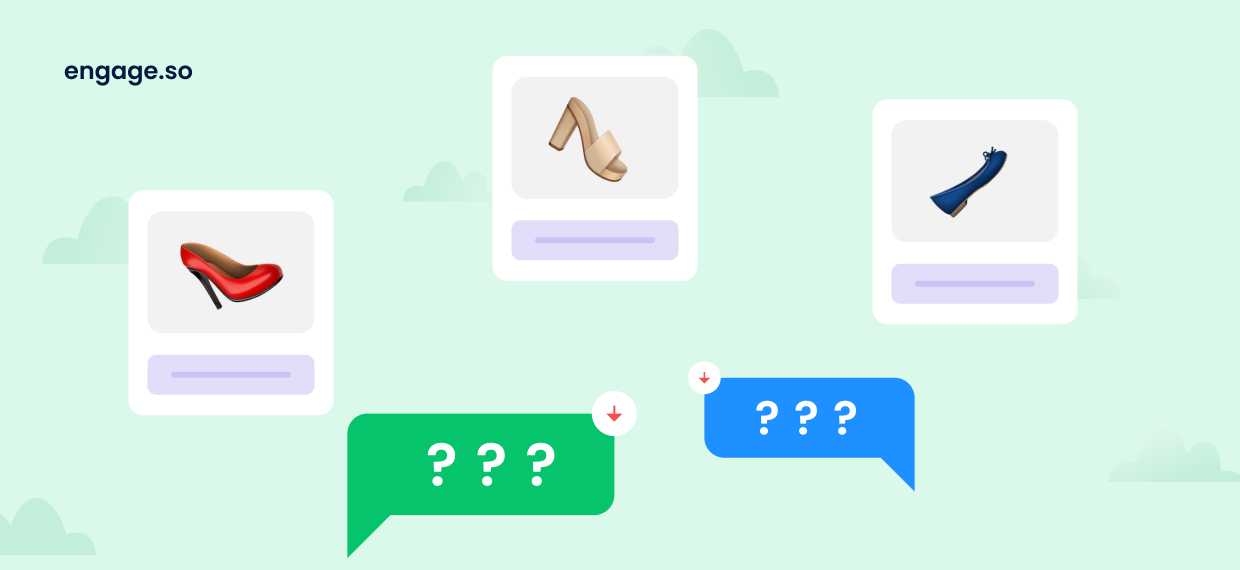How Choice Paralysis Affects your Conversion Rates
Choice paralysis has a significant impact on converting leads into customers, and ultimately fans. In this guide, we take a deep dive and offer solutions.

Choice paralysis or "The Paradox of Choice", is a weird occurrence that dampens conversion or engagement rates. Let's start with a definition:
The paradox of choice stipulates that while we might believe that being presented with multiple options actually makes it easier to choose one that we are happy with, and thus increases consumer satisfaction, having an abundance of options actually requires more effort to make a decision and can leave us feeling unsatisfied with our choice.- The Decision Lab
Making a choice was easier when option were limited. Although multiple options were supposed to make things better, they come with the challenge of making a satisfying choice. In his book, The Paradox of Choice, Barry Schwartz said: "Learning to choose is hard. Learning to choose well is harder. And learning to choose well in a world of unlimited possibilities is harder still, perhaps too hard."
In essence, as a business working to provide your customer with multiple options, so they get a better experience, you might just be making things harder. Does this mean you should stop providing multiple options? No. However, you need to make it easier for your customers to choose.
This article touches on:
- Choice paralysis and conversion
- The Netflix challenge with choice paralysis
- How to manage choice paralysis with messaging
How choice paralysis affects conversion
Far back in the year 2000, two researchers sought to challenge the notion that more choice is better. For their study, they set up a jam tasting booth with purchase as the intent. All through the research period, they alternated between displays of 24 jam types and 6 jam types. Here's what happened.
Display of 24
- 60% of the visitors sampled the jams
- Only 3% made a purchase decision.
Display of 6
- 40% of visitors sampled the jams.
- 30% made a purchase decision.
Do you notice a pattern here? When the options were more, the visits were higher but purchase decisions only improved when the options were less. The mind is quite interesting, and acts in surprising ways.
When exposed to so many options, it can fall into state known as choice overload, which leads it to delay decision-making. And in turn, this affects the conversion/engagement rates for businesses. Once again, this doesn't suggest that you offer less. Rather, you need a better approach to presenting your options.
The more choices you offer, the more likely people will delay their decision—even if it goes against their best interest.- UserTesting
Netflix and choice paralysis
If you google up choice paralysis now, you are sure to find a mention of Netflix. The streaming platform is well-known for its vibrant collection of movies from across the world. But as you expect, that comes with the complex burden of making a choice.
It's probably an experience you've also gone through if you use the platform. The downside of this is that the more you experience choice overload, the less likely you will renew your subscription—mainly if there's no trending movie.
One way the streaming platform is fixing this is with Shuffle Play. Based on your watch history, it automatically suggests a collection of movies suited to your taste. This tailored suggestion is probably an extra reason why no one should mess with your watch profile, right?
Key Lesson: Segment users based on interest and expose them to tailored options gradually.
Messaging and choice paralysis
The first interaction a customer has with your brand is onboarding. In that stage, they sign up and activate their accounts. Do not miss out the opportunity to segment, particularly if you are a service platform. Ask for their industry or what they’d love to use your platform for.
Based on their responses, place them in relevant segments and send them targeted messages that make choice-making easier. Let’s explore an example with an aggregator of food vendors. That is, a platform which helps people order meals from various restaurants.
In this case, there are two customers. The food vendors and the consumers. When choice overload kicks in, a consumer would most likely go for a known name and that affects unknown brands listed on the platform. The impact of that is unknown food vendors are not incentivised to list since the proposed value was visibility in the first place.
A Suggested Fix
While onboarding the consumer, ask for the food preferences. These preferences should match categorisations of the restaurants. For example, if burger is a food preference there should be a restaurant category for those who sell burgers.
A customer that chooses the burger preference is added to a segment for customers who prefer burgers. By the way, it is possible to be part of multiple segments at once. So, they could be in the burger segment and also be in the pasta segment.
>> Learn More: How to build customer segments with Engage.
Every week, a roundup of top 5 burger restaurants with a discount offer is sent via email, SMS, or in-app messages to the burger segment. That way, the choices are limited but also well-targeted to nudge a purchase decision from the customer.
To make things even better, consumers get to choose their top preference and get only emails for that. They can also be nudged to update their preferences from time to time. In all, the platform will aid decision-making with segmented messaging built around limited choices.
______________________________________________
Would you like to learn more about messaging that builds fans out of your customers? Book a free chat here.
